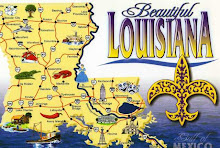The effects of Hurricane Katrina in New Orleans were shattering and long-lasting. As the center of Katrina passed east of New Orleans on August 29, 2005, winds downtown were in the Category 3 range with frequent intense gusts and tidal surge. Though the most severe portion of Katrina missed the city, hitting nearby St. Bernard and Plaquemines parishes, the storm surge caused more than 50 breaches in drainage canal levees and also in navigational canal levees and precipitated the worst engineering disaster in the history of the United States.[1]
By August 31, 2005, eighty percent of New Orleans was flooded, with some parts under 15 feet (4.5 m) of water. Most of the city's levees designed and built by the United States Army Corps of Engineers broke somewhere, including the 17th Street Canal levee, the Industrial Canal levee, and the London Avenue Canal floodwall. These breaches were responsible for most of the flooding, according to a June 2007 report by the American Society of Civil Engineers.[2]Oil refining stopped so the price of petrol increased all over the world.
Ninety percent of the residents of southeast Louisiana were evacuated in the most successful evacuation of a major urban area in the nation's history. Despite this, many remained (mainly the elderly and poor). The Louisiana Superdome was used as a designated "refuge of last resort" for those who remained in the city. The city flooded due primarily to the failure of the federally built levee system. Many who remained in their homes had to swim for their lives, wade through deep water, or remain trapped in their attics or on their rooftops.
The disaster had major implications for a large segment of the population, economy, and politics of the entire United States. It has prompted a Congressional review of the Corps of Engineers and the near total failure of the federally built flood protection system which experts agree should have protected the city's inhabitants from Katrina's surge. Katrina has also stimulated significant research in the academic community into urban planning, real estate finance, and economic issues in the wake of a natural disaster.[3]

No comments:
Post a Comment